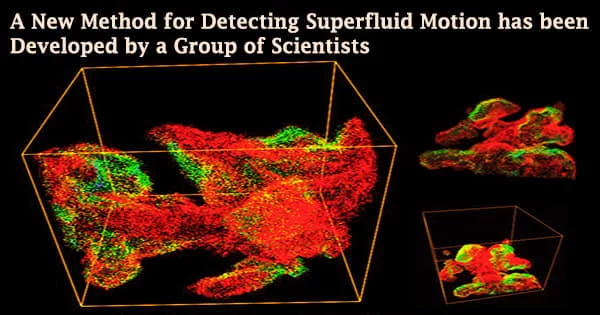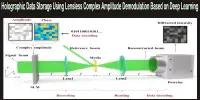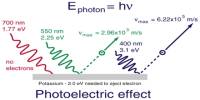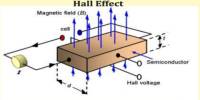A new study led by researchers at Rochester Institute of Technology might help unleash the potential of superfluids, which are basically frictionless unique substances capable of unstoppable motion once started. In a paper published in Physical Review Letters, a group of scientists led by Mishkat Bhattacharya, an associate professor at RIT’s School of Physics and Astronomy and the Future Photon Initiative, suggested a new approach for detecting superfluid motion.
Scientists have already generated superfluids in liquids, solids, and gases, and they hope that exploiting the characteristics of superfluids could lead to breakthroughs like a room-temperature superconductor. Such a finding, according to Bhattacharya, may revolutionize the electronics sector, where energy loss owing to resistive heating of cables costs a lot of money.
When light propagates in nonlinear media, quantum fluids of light combine many-body physics with nonlinear optics to show quantum hydrodynamic characteristics of light. The capacity of light to transport itself as a superfluid is one of the most striking examples of its behavior as an interacting fluid. Superfluidity, the frictionless flow and other unusual behavior found in liquid helium at temperatures approaching absolute zero (−273.15 °C, or −459.67 °F), and comparable frictionless behavior of electrons in a superconducting solid.
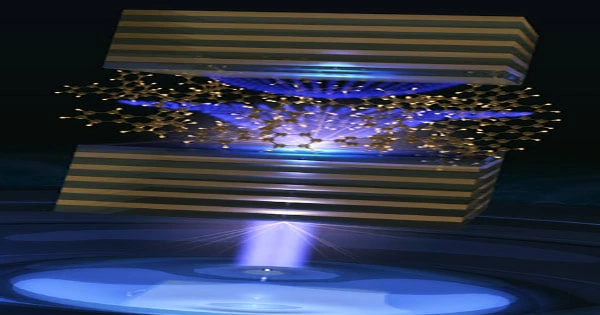
One of the most difficult aspects of researching superfluids is that all existing methods of monitoring the delicate superfluid rotation cease the motion. Bhattacharya and his team of RIT postdoctoral researchers collaborated with scientists from Japan, Taiwan, and India to develop a new minimally damaging, in situ, and real-time detection approach.
Both helium isotopes stay liquid at low pressures down to absolute zero and exhibit superfluidity, albeit the start of superfluidity occurs at quite different temperatures in the two situations. The superfluid regime, which is characterized by the suppression of long-range radiation from the barrier, reduces both values to zero. The capacity to modify both the flow and the potential environment in experiments lays the path for quantum transport modeling in complicated systems.
The new method was inspired by the techniques used to detect Einstein’s anticipated gravitational waves, according to Bhattacharya. The basic concept is that laser light is passed through a spinning superfluid. The light that emerged would then be modulated at the superfluid rotation frequency.
The superfluid motion was discovered by detecting this frequency in the light beam using existing technologies. The researchers overcame the difficulty of ensuring that the laser beam did not disrupt the superflow by selecting a light wavelength that was not absorbed by the atoms.
“Our proposed method is the first to ensure minimally destructive measurement and is a thousand times more sensitive than any available technique,” said Bhattacharya. “This is a very exciting development, as the combination of optics with atomic superflow promises entirely new possibilities for sensing and information processing.”
Bhattacharya and his colleagues have shown that light may actively control supercurrents. They demonstrated that light may generate quantum entanglement between two currents traveling through the same gas. Entanglement of this type might be beneficial for storing and analyzing quantum data.
The superfluid behavior of mixed light-matter cavity gases of exciton-polaritons has also been intensively investigated, resulting in the emergence of the field of “quantum fluids of light.” The notion of a superfluid motion of light comes from pioneering work in cavityless all-optical setups, where the hydrodynamic nucleation of quantized vortices beyond a barrier when a laser beam propagates through a bulk nonlinear medium was studied.
The ability to sustain persistent currents in a ring-shaped container; the phenomenon of film creep, in which the liquid flows up and over the side of a bucket containing it without apparent friction; and a thermal conductivity that is millions of times its value in the normal phase and greater than that of the best metallic conductors are all examples of superfluid phenomena.
The theoretical team for Bhattacharya’s study included RIT postdoctoral researchers Pardeep Kumar and Tushar Biswas, as well as RIT alumni Kristian Feliz ’21 (physics). Professors Rina Kanamoto of Meiji University, Ming-Shien Chang of the Academia Sinica, and Anand Jha of the Indian Institute of Technology were among the foreign collaborators. The National Science Foundation funded Bhattacharya’s research with a CAREER Award.
